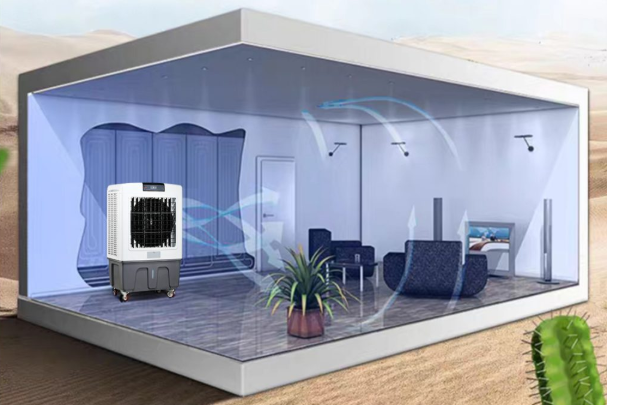

HVAC Services
Get Professional Repairs From The Area's Trusted HVAC Technicians. Ask About Our Services! We Offer Professional Heating & Cooling System Repairs And Guarantee Long-Lasting Results.
Got Question? Call us: (850) 678-2665Financing
Gas Furnaces: The Pros and Cons
Discover the pros and cons of gas furnaces in this informative article. Learn about their efficiency, cost, heat distribution, lifespan, and environmental impact. Make an informed decision for your heating needs.

Are you considering installing a new furnace but unsure whether to go for a gas or electric model? Look no further! In this article, we will explore the pros and cons of gas furnaces, providing you with valuable insights to help you make an informed decision. Gas furnaces, like those offered by Tempacure Heating and Air Conditioning, have become increasingly popular due to their efficiency and reliability. However, it’s important to weigh the advantages against the potential drawbacks before making your final choice. Let’s dive into the world of gas furnaces and discover what makes them a top contender in the HVAC industry.

This image is property of hvacsantaclarita.net.
Gas Furnaces: The Pros and Cons
Gas furnaces are a popular choice for heating homes due to their efficiency, cost-effectiveness, and ability to distribute heat effectively. However, they also come with some drawbacks that homeowners should consider before making a decision. In this article, we will explore the pros and cons of gas furnaces, as well as delve into their efficiency, cost, heat distribution, lifespan, and environmental impact.
Efficiency
Gas furnaces are known for their high efficiency, meaning they can convert a significant portion of the energy from natural gas into heat. This efficiency is measured by the Annual Fuel Utilization Efficiency (AFUE), which represents the percentage of heat produced compared to the amount of energy consumed. Gas furnaces typically have AFUE ratings ranging from 80% to 98%, with higher ratings indicating higher efficiency.
Cost
When it comes to cost, gas furnaces have both advantages and disadvantages. The initial installation cost of a gas furnace can be higher compared to an electric furnace, mainly due to the additional requirements such as gas lines and venting systems. However, gas furnaces generally have lower operating costs due to the relatively low price of natural gas compared to electricity. Additionally, gas furnaces require regular maintenance, which can add to the overall cost over time.
Heat Distribution
Gas furnaces utilize forced air heating to distribute heat throughout a home. This involves heating the air in the furnace and then using a blower to circulate the warm air through ducts and vents. This method of heat distribution is highly effective and can quickly warm up even large spaces. To further enhance heat distribution, homeowners can also consider implementing zoning systems, which allow for better control of temperature in different areas of the house.
Lifespan
Gas furnaces are known for their long lifespan, with proper maintenance and care. On average, a well-maintained gas furnace can last anywhere between 15 to 30 years. However, it is important to note that the lifespan of a gas furnace can be influenced by factors such as the quality of installation, regular maintenance, and the frequency of use. regular inspections and tune-ups are necessary to ensure the longevity and efficiency of the furnace.
Environmental Impact
The environmental impact of gas furnaces is a significant consideration, particularly in terms of greenhouse gas emissions. Natural gas is a fossil fuel, and when burned, it releases carbon dioxide (CO2) and other greenhouse gases into the atmosphere. However, advancements in technology have led to gas furnaces with reduced pollutant output. Modern gas furnaces are designed to burn fuel more efficiently, resulting in lower emissions of nitrogen oxides (NOx) and sulfur dioxide (SO2), both of which contribute to air pollution and climate change.
Pros of Gas Furnaces
High Efficiency
Gas furnaces have high efficiency ratings, allowing for optimal energy conversion and cost savings. The higher the AFUE rating, the more efficient the furnace is in converting gas into heat.
Lower Operating Costs
Compared to electric furnaces, gas furnaces generally have lower operating costs due to the lower price of natural gas. This can lead to significant savings in utility bills over the lifespan of the furnace.
Effective Heat Distribution
Gas furnaces utilize forced air heating, which allows for quick and efficient heat distribution throughout the house. This ensures a comfortable living environment, even during the coldest months.
Long Lifespan
With regular maintenance and care, gas furnaces can last for several decades, providing reliable heat for your home. Investing in a quality gas furnace can result in long-term savings and peace of mind.
Better for the Environment
While gas furnaces do have some environmental impact, modern models are designed to reduce greenhouse gas emissions. This makes them a greener choice compared to older, less efficient furnaces.
Cons of Gas Furnaces
Higher Installation Costs
The initial installation cost of a gas furnace can be higher than that of an electric furnace due to additional requirements such as gas lines and venting systems. However, this upfront cost can be offset by long-term savings on operating costs.
Safety Concerns
Gas furnaces involve the use of natural gas, which can present safety concerns if not properly installed or maintained. It is crucial to have a professional HVAC technician perform the installation and conduct regular inspections to ensure safe operation.
Carbon Monoxide Risk
Improperly functioning or poorly maintained gas furnaces can produce carbon monoxide (CO), a colorless and odorless gas that can be dangerous or even fatal if inhaled. To minimize the risk, it is essential to install and regularly check carbon monoxide detectors in your home.
Dependency on Natural Gas
Gas furnaces rely on the availability of natural gas, which can be limited in some areas. Before considering a gas furnace, it is essential to ensure a reliable and affordable supply of natural gas is available in your location.
Limited Availability
In certain regions or remote areas, access to natural gas lines may be limited or not available at all. This can be a significant drawback when considering the installation of a gas furnace.
Efficiency
Efficiency is a key factor to consider when choosing a gas furnace. It determines how effectively the furnace can convert natural gas into heat for your home.
Energy Efficiency
Gas furnaces are designed to convert a high percentage of the energy from natural gas into heat, making them energy-efficient heating options. Look for furnaces with higher AFUE ratings to ensure optimal efficiency.
Annual Fuel Utilization Efficiency (AFUE)
AFUE is a measure of a gas furnace’s efficiency, represented as a percentage. The higher the AFUE rating, the more efficient the furnace is in converting fuel into heat. For maximum efficiency, look for furnaces with AFUE ratings of 90% or higher.

This image is property of www.mertsheating.com.
Cost
The cost of a gas furnace includes the installation cost, operating cost, and maintenance cost. Understanding these costs can help you make an informed decision.
Installation Cost
Gas furnaces often have higher installation costs compared to electric furnaces due to the additional requirements of gas lines, venting systems, and professional installation. It is crucial to obtain quotes from reputable HVAC contractors to determine the upfront cost.
Operating Cost
While gas furnaces may have higher upfront installation costs, they generally have lower operating costs due to the lower price of natural gas. This can result in significant savings on monthly utility bills throughout the lifespan of the furnace.
Maintenance Cost
Regular maintenance is essential to ensure the longevity and efficiency of a gas furnace. This includes annual inspections, tune-ups, and filter replacements. While maintenance costs may vary, they should be factored into the overall cost of owning and operating a gas furnace.
Heat Distribution
Gas furnaces utilize forced air heating systems to distribute heat effectively throughout the house. Understanding the different methods of heat distribution can help ensure a comfortable and evenly heated living space.
Forced Air Heating
Forced air heating involves heating the air in the furnace and then using a blower to circulate the warm air through ducts and vents. This method quickly and efficiently distributes heat throughout the house, ensuring a comfortable living environment.
Zoning
Zoning systems allow for better control of temperature in different areas of the house. By dividing the house into zones and installing dampers in ductwork, homeowners can regulate the temperature independently in each zone. This can lead to increased energy savings and personalized comfort.

This image is property of cdn-bgohl.nitrocdn.com.
Lifespan
The lifespan of a gas furnace can vary depending on various factors, including maintenance, installation quality, and frequency of use. Understanding the factors that influence lifespan can help homeowners make informed decisions.
Durability
Gas furnaces are generally built to be durable and withstand the demands of regular use. However, factors such as the quality of components, installation, and ongoing maintenance play a significant role in the overall durability of the furnace.
Maintenance
Regular maintenance, including annual inspections and tune-ups, is crucial to ensure the longevity and efficient operation of a gas furnace. By properly maintaining the furnace, homeowners can prevent premature breakdowns and extend its lifespan.
Environmental Impact
Considering the environmental impact of a gas furnace is important for homeowners looking to minimize their carbon footprint and contribute to a cleaner environment.
Greenhouse Gas Emissions
Gas furnaces burn natural gas, which releases carbon dioxide (CO2) and other greenhouse gases into the atmosphere. However, advancements in furnace technology have led to reduced pollutant output, making modern gas furnaces greener compared to older models.
Renewable Energy Compatibility
While gas furnaces are not considered renewable energy sources themselves, they can be compatible with other renewable energy systems, such as solar panels or geothermal heat pumps. These systems can help offset the environmental impact of burning natural gas and further reduce greenhouse gas emissions.
In conclusion, gas furnaces offer several benefits, including high efficiency, lower operating costs, effective heat distribution, and long lifespans. However, they also come with some drawbacks, such as higher installation costs, safety concerns, and limited availability. Understanding the efficiency, cost, heat distribution, lifespan, and environmental impact of gas furnaces can help homeowners make informed decisions that suit their heating needs and preferences. By carefully considering the pros and cons, homeowners can choose a heating system that provides comfort, efficiency, and peace of mind.

This image is property of alphamechanicals.com.


